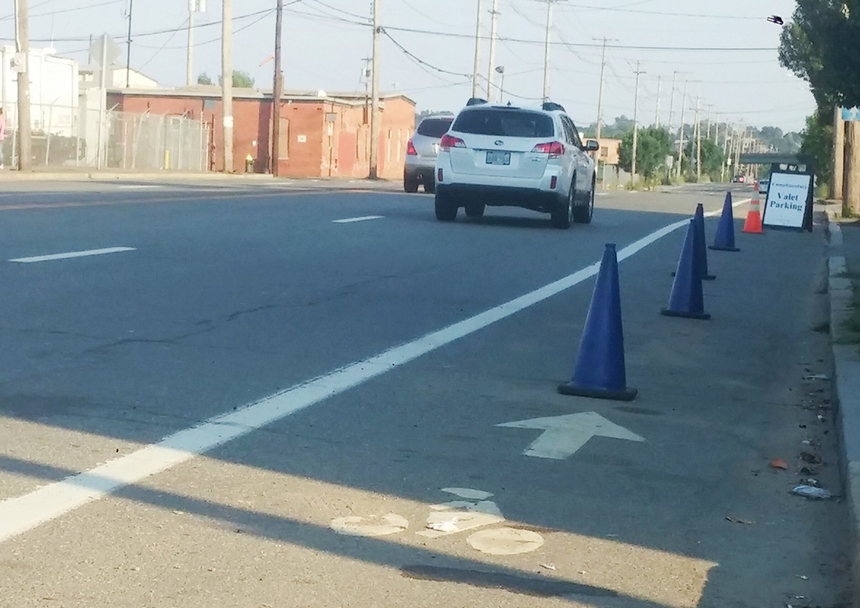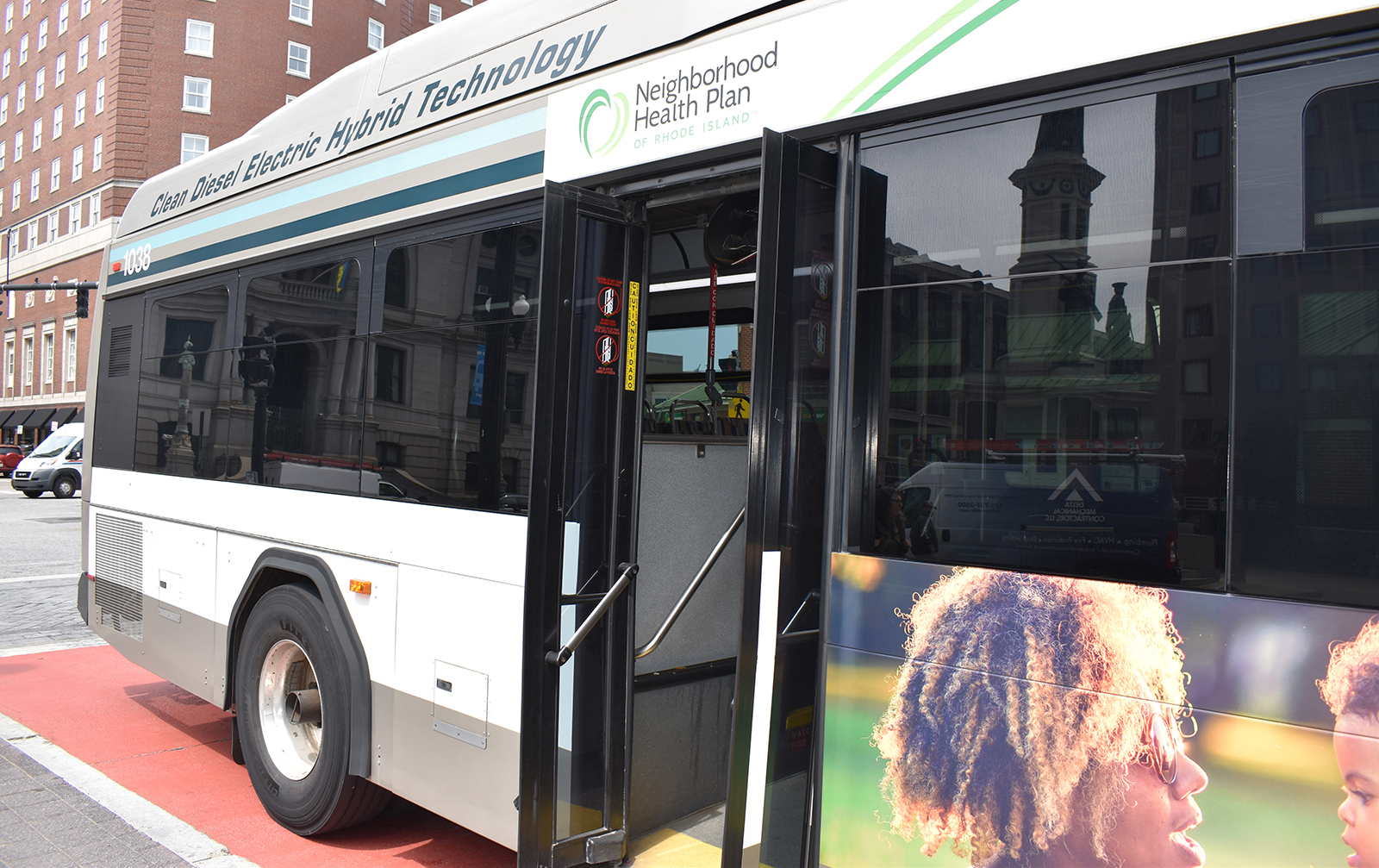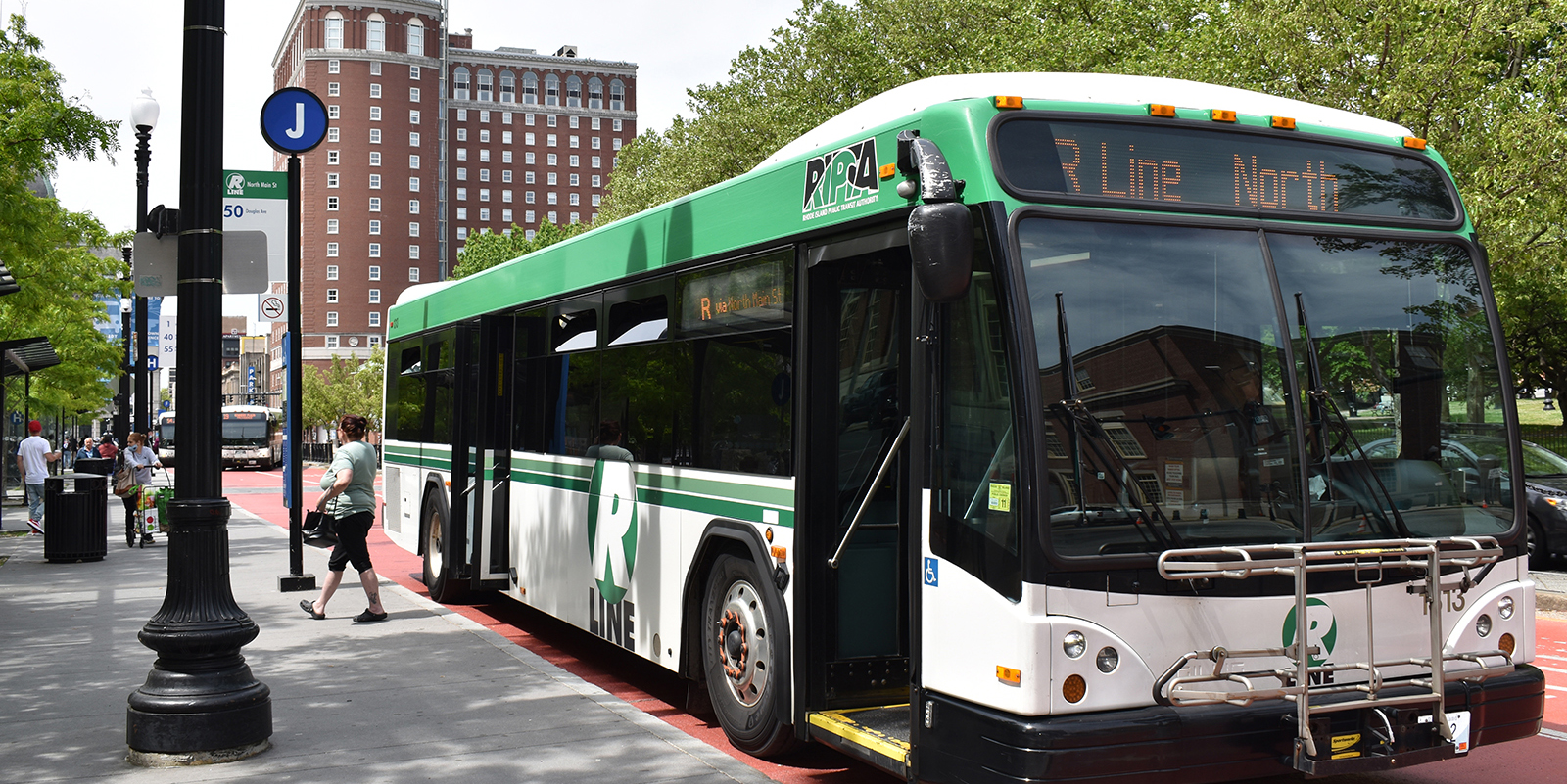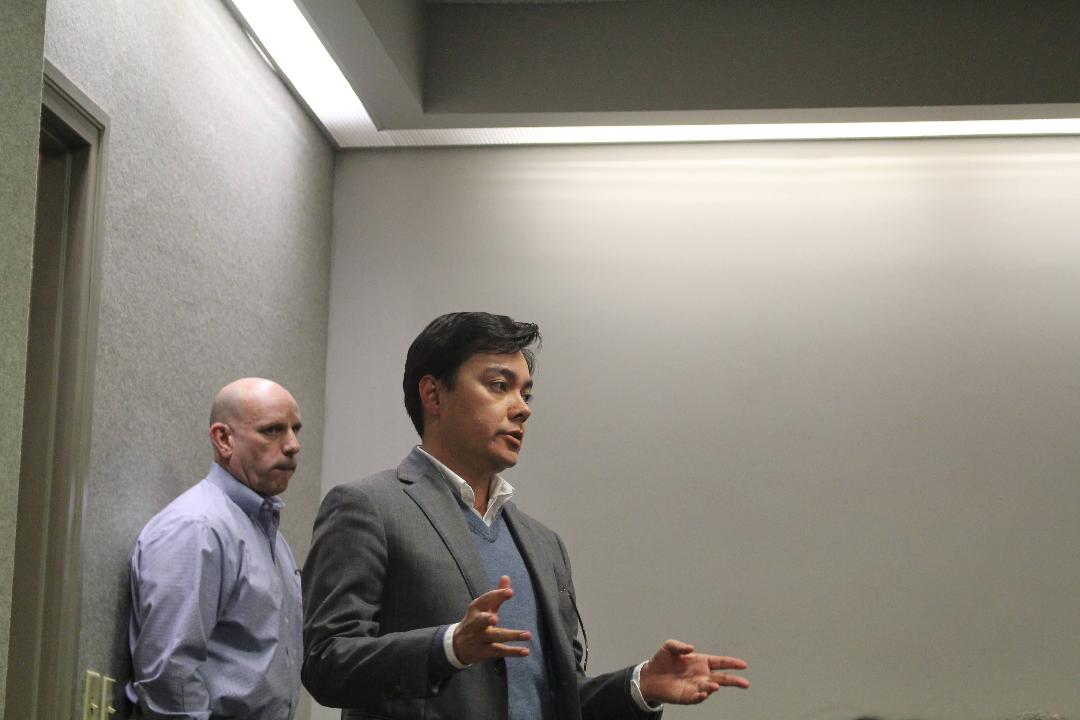Rhode Island Alternative Transit Options Hit State-Built Wall
February 22, 2019
During the 1950s, cheap gas, lobbying by the fossil-fuel industry, political shortsightedness, and the marketing of automobiles as a symbol of personal freedom derailed the nation’s transit system, including Rhode Island’s network of interurban streetcars and trolleybuses.
Six decades later, less than 3 percent of Rhode Island residents use public transportation to commute to work — that percentage is noticeably higher in both Connecticut (nearly 6 percent) and Massachusetts (nearly 10 percent). In fact, those who have held power in Rhode Island during the past 60-plus years have only strengthened the state’s car-centered culture, even as climate-change pressures mount and greenhouse gases accumulate.
The fact public transit and alternative modes of transportation are cheaper, healthier, safer, and greener is largely ignored in a state that paints itself blue. The ongoing reconstruction of the 6-10 Connector is a perfect example of Rhode Island’s narrow view of transportation infrastructure. The existing system of highways and ramps comprising the interchange was originally built in the 1950s as a bypass around Olneyville. It’s being rebuilt basically in the same manner and will continue to cut Olneyville off from the rest of Providence.
The idea of reconstructing the 6-10 Connector as a multimodal boulevard, which had the support of Providence officials and transit advocates and would have cost far less to build, was quickly dismissed by the Rhode Island Department of Transportation (RIDOT), which was more concerned with preserving the connector as a highway for suburban commuters driving alone.
Author and Pulitzer Prize-winning journalist Edward Humes says that about 80 cents of every dollar spent on gasoline is squandered by the inefficiencies of the modern internal combustion engine.
“No part of daily life wastes more energy and, by extension, more money than the modern automobile,” he wrote in his 2016 book Door to Door: The Magnificent, Maddening, Mysterious World of Transportation. “While burning through all that fuel, cars and trucks spew toxins and particulate waste into the atmosphere that induce cancer, lung disease, and asthma. These emissions measurably decrease longevity—not by a matter of days, but years.”
Humes noted that the Massachusetts Institute of Technology has calculated that 53,000 Americans die prematurely every year from vehicle pollution, losing 10 years of life on average compared to their lifespans in the absence of tailpipe emissions.
Neither the House nor Senate has a transportation committee, despite the fact some 4.5 million tons of carbon dioxide are produced by Rhode Island’s transportation sector every year, or about 40 percent of the state’s annual fossil-fuel emissions.
Several Rhode Island studies and reports published during the past decade highlight the importance of reducing vehicle miles traveled and promote riding the bus, bicycling, and walking. They note the dangers of exhaust and particulate matter spewing from tailpipes and diesel smoke stacks.
One of these studies recently found that Providence neighborhoods close to Interstate 95 and the city’s industrial waterfront are suffering from unhealthy emissions.
The state’s transit master plan, Moving Forward 2040, “will envision how our passenger transportation network should look and operate in the future … how this network should be enhanced and further developed to best meet the travel needs of the state’s residents, workers and visitors.”
The state’s Long Range Transportation Plan says transportation “must equitably benefit all communities, and must be reconciled with quality of life issues as vital as the air we breathe, the water we drink, and the preservation of our natural and historic heritage and beauty of the natural and built environments. It cannot exist independently of these concerns.”
The guiding principles of Rhode Island’s Transportation Improvement Program (TIP) stress the need to provide “convenient transportation services and facilities that offer seamless and efficient connections across different modes for the maximum number of users.” They also note that the state must “recognize, protect and enhance the quality of the state’s environmental resources through well-designed transportation projects and the effective operation of the system.”
Rhode Island’s Complete Streets Action Plan proudly notes that as part of a “typical resurfacing project, RIDOT performed a Road Safety Assessment to address safety concerns for students crossing Elmwood Avenue at various points along the corridor.”
When RIDOT repaved Elmwood Avenue four years ago, it chose to include sharrows rather than incorporate separated bike lanes. The agency’s safety work mostly included other roadway spray painting.
The State Guide Plan, which was established by Rhode Island General Law 42-11-10, says “the state has a positive interest and demonstrated need for establishment of a comprehensive strategic state planning process and the preparation, maintenance, and implementation of plans for the physical, economic, and social, development of the state.”
RIDOT is legally required to build projects in accordance with the priorities set in the State Guide Plan.
Also, federal money can be used to plan and build separated bike lanes and road diets, which are generally described as removing vehicle lanes from a road and reallocating the extra space for other uses such as bicycle lanes, transit use, or pedestrian refuge islands. There is no minimum lane width requirement to be eligible for federal funding.
Rhode Island’s complete streets law, which has been in place for seven years, says that when the state “constructs or modifies roads and highways, the relevant department must consider complete street design features that facilitate safe travel by all users that expands upon currently accepted state and federal design requirements to accommodate all users, including current and projected users, particularly pedestrians, bicyclists and individuals of all ages and mobility capabilities.”

As is Rhode Island tradition, RIDOT, the governor, and other state agencies routinely disregard what reports recommend and what state law requires. There is no accountability shown and no consequences faced for ignoring accepted guidelines and the law.
Just last month RIDOT requested a major amendment to Rhode Island’s 10-year TIP that included a substantial funding cut, about 33 percent, to bicycle and pedestrian projects in the Transportation Alternatives Program (TAP). The request would have delayed, reduced, and eliminated nearly $28 million in funding to some three dozen alternative transportation projects statewide.
RIDOT withdrew its amendment on Feb. 22, noting that an unexpected influx of nearly $70 million in federal money allocated to Rhode Island though the Transportation, Housing and Urban Development, and Related Agencies Appropriations Act of 2019 negated the request. The Transportation Advisory Committee public hearings on the RIDOT amendment scheduled for Feb. 25 and 28 have been canceled.
The state’s top elected officials and their appointed department heads like to claim they want to reduce climate emissions produced by Rhode Island’s transportation sector, but they don’t offer any real specifics on how to accomplish that beyond talking about electric vehicles, fail to support public transportation with any meaningful action, and remained quiet when one state agency announced its intention to raid accounts earmarked for bicycle and pedestrian projects — a move that would have eliminated funding or delayed some alternative transportation projects by up to eight years.
The only way Rhode Island can dramatically reduce its greenhouse-gas emissions is to transform its transportation sector, by expanding public transit and supporting alternative modes of movement. Embracing those two issues would also create jobs and address social inequity.
But the political system isn’t designed to improve either of those two transit options. The Rhode Island Public Transit Authority is largely funded by an antiquated formula that relies on a tax on gasoline, which has lost value as cars have become more fuel efficient and loses value when gas prices spike and more people seek alternative modes of transportation.
All projects submitted to the TIP that include bicycle and pedestrian components are placed in the TAP account, where supporters of these projects are left to fight over a minuscule portion of Rhode Island’s total transportation funding, less than 3 percent.
The state could stop the fight over financial crumbs for alternative transportation projects by simply making the inclusion of bicycle and pedestrian components a matter of course when building and rehabilitating transportation infrastructure, as both the State Guide Plan and the complete streets statute mandate. RIDOT, the Department of Administration, and the governor, however, essentially treat the law as optional.
Expanding public transit and supporting alternative modes of transportation requires critical thinking, such as dedicating a portion of vehicle registration fees and sale taxes to public transportation and bicycling and pedestrian infrastructure.
The Climate and Development Lab at Brown University has published a Transit Master Plan that recommends:
Require all state agencies and institutions of higher education to offer free or subsidized Eco-Pass or U-Pass to all employees and students.
Require all economic development and governmental projects be tied to transportation audits, with a focus on public transit, biking, and walking.
Expand efforts to provide dedicated bus lanes, signal prioritization for buses, and express routes.
Seek to address the needs of people from racially and economically marginalized communities, especially in key transit cities.
Create alternative funding mechanisms that tie mitigating impacts from climate change to expanding mass transit.




If you’re under 20, then 50 years from now the reason that you didn’t die early from mass hunger is that you organized.
If we’re going to have "automated vehicles" then get them off the freeway. It could be far more energy-effective to move passenger boxes around on cables like ski gondolas, where they can’t hit anything, and sometimes plug these well-appointed passenger boxes into trains like cargo boxes coming off a ship.
thanks again Frank for covering transportation related issues, which too often seemed under the radar of environmental groups though that is finally changing. Another example of a disregarded state law: RIGL 36-6-21.1, passed in 2008 that calls for the Dept of Administration to implement a plan to incentivize state employees to reduce commuting miles, eventually by 35%, and calls for an annual report on progress. It also is to "include an offer of a RIPTA transit pass in lieu of parking privileges." As far as I know none of this has been implemented.
I heard state employee unions didn’t want the transit benefit because it was thought it might somehow undermine their "free" parking they get. (No so free if you consider the cost of paving over part of the State House lawn for them and a lot across the street from the State House.) It is not that there isn’t decent service to the state capital area, 3 major bus lines go directly there, plus a few more and the commuter rail nearby. Bit you wouldn’t know it, there are no schedules or info distributed, a hard to find bus stop sign, and despite my frequent requests, no bus shelters either outbound or inbound. Nobody cares, not even RIPTA that is missing an opportunity to market not just to state employees but to the army of visitors, lobbyists and rally-goers.
I think one factor underlying all this is the wide perception that the buses are just for the poor, a perception stronger in RI than elsewhere because of the long campaign for "free" fares for seniors/disabled w(now about 1/3 of all riders) which exist in only a tiny % if transit systems.
Part of this problem also lies with RIPTA. RIPTA has some of the worse drivers I have ever seen on public transit. I tried taking the bus at least once a week and often found drivers would pass by bus stops without stopping or they would be rude. There were rare occasions in which I encountered a friendly driver. I often did not feel safe taking the bus partly due to the erratic driving with some of the drivers and also partly due to behaviors of some of the other passengers.
Another problem, particular in winter is, what hopefully adhering to complete streets prigram would solve, sidewalks that are not conducive to pedestrians. Winter is worse because RI property owners (including some municipalities) don’t often shovel or treat their sidewalks and thereby forcing pedestrians to take to the streets,
I do plan to try again with taking the bus once a week, when possible, as soon as Spring arrives.
Unfortunately, state officials may be "talking about electric vehicles," but they are doing nothing to promote them; they have eliminated the $2500 tax incentive that made them more affordable, and they are not doing much in the way of installing chargers on state property. URI may have a charging station, but there are none at the Warwick or Lincoln CCRI campuses.
It’s not "alternative" transportation. Cars are "alternative". Our core transportation systems are transit, biking, and walking. It’s the failure to prepare our core transportation systems properly that causes so many additional car miles to be racked up.
Follow Germany’s lead, and save consumers money.
https://www.citylab.com/transportation/2015/02/all-the-ways-germany-is-less-car-reliant-than-the-us-in-1-chart/385163/